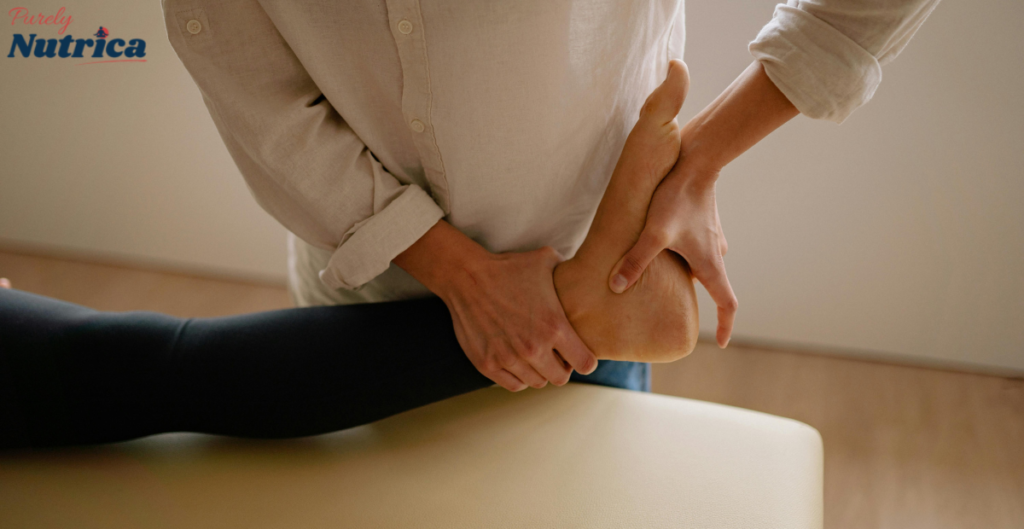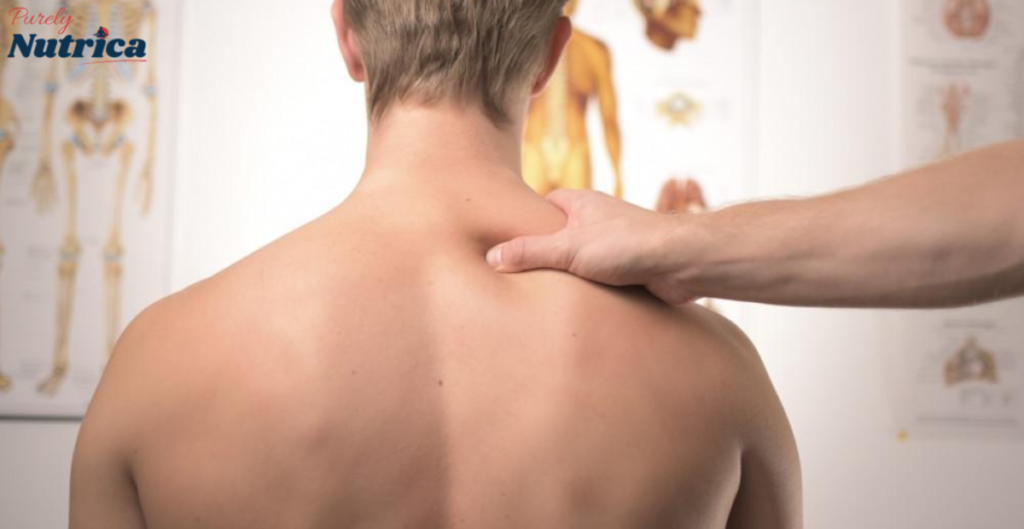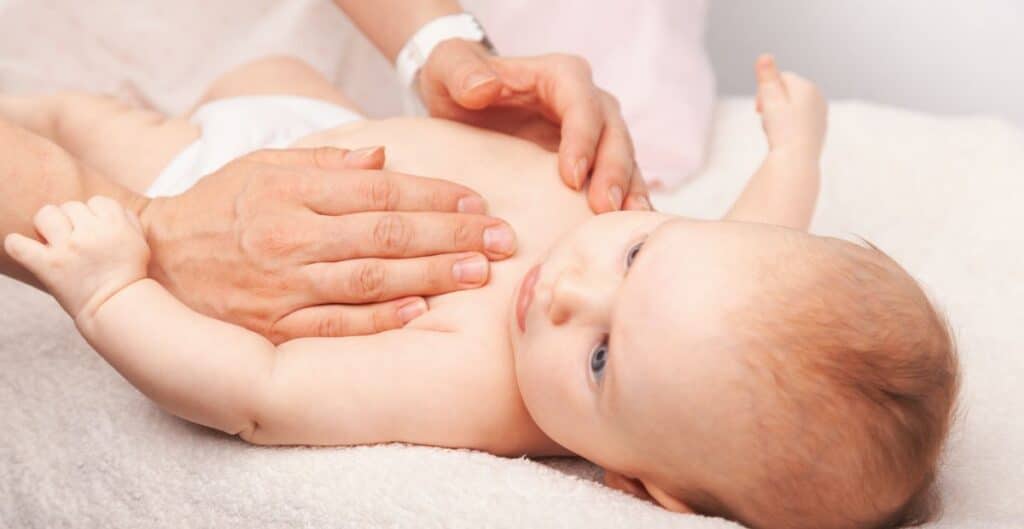Should You Get a Massage Before or After a Chiropractor?
There are two forms of treatment that are more effective in relieving pain, enhancing mobility and promoting relaxation: Chiropractors and Massage Therapy. There are specific settings in which each of the two different therapies works best to provide the maximum benefits.
There is, however, a common debate among many people regarding the best time to give a massage: right before or right after receiving a chiropractic adjustment? When someone asks a question like this, most of them are not looking for a definite answer; instead, they are looking for a diagnostic explaining “why” their condition or goals vary. It is good to be aware of the benefits of both strategies in order to choose the most effective strategy to combine them.
Understanding Chiropractic Care
Chiropractic care is a holistic approach that focuses on diagnosing and treating musculoskeletal issues, particularly those related to the spine, using non-invasive techniques. The goal is to improve spinal alignment to enhance the body’s natural ability to heal itself.
What Does a Chiropractor Do?
Most of the work of chiropractors revolves around the assessment and management of the functional disorders of the muscular and skeletal systems, with special emphasis on the spine. This is primarily because the spine is an important component of the human body, with its wrong alignment (subluxation) possibly resulting in pain, immobility, and other body complications such as headache and nerve pain.
Chiropractors perform manual therapies called chiropractic manipulative therapy (CMT) to adjust the misaligned spine structures assuming that the alignment will enhance the function of the nervous system and relieve the pressure exerted in the soft tissues. In addition to the spinal correction during chiropractic adjustment procedures, improvements in one’s posture, flexibility and general body wellness are also enhanced.
How Does Chiropractic Adjustment Help?
The base of chiropractic care is that the human body has the ability of self-healing if it is provided with proper alignment of the spinal cord. However, when the spinal cord is not in its designated position, there may be excess pressure on the nerves and they may even get damaged causing the patient to experience pain and decrease in motion among other problems. The chiropractor’s goal is to use controlled force to bring back these bones to their natural alignment so that the body can heal faster and minimize pain swelling, and enhance blood flow.
In some instances adjustments, the spinal adjustments are complemented by other measures such as advising patients on appropriate exercise, nutrition, and changes in lifestyle so as to promote healthy living and control possibilities of recurrence. Chronic pain, injuries, or even just seeking to sustain good spinal health can entail the need to access chiropractic care as part of an individual’s wellness routine.
Understanding Massage Therapy
Massage therapy involves the manipulation of soft tissues to promote relaxation, relieve tension, and enhance blood circulation. It’s a therapeutic technique that targets muscles and tendons to improve overall well-being and alleviate pain.
What Does a Massage Therapist Do?
Massage therapy focuses on the body’s soft tissue including the muscles, tendons and ligaments. For example, given the right amount of pressure on these body parts, tension will alleviate, enhancing blood flow, and relaxing the body. To add onto this, there are several categories of massage therapy that each have a different technique and advantages.
Benefits of Massage Therapy
Benefits of massage treatment for both physical and mental health include:
- Muscle Relaxation: Massage helps to relieve tension in the muscles by making other bodily functions easier.
- Better Circulation: Adequate supply of blood carries oxygen, and other nutrients to the muscles thus facilitating healing and lessening soreness.
- Stress Management: Massage therapy triggers relaxation and lessens the stress by lowering the levels of certain hormones such as cortisol.
- Alleviation of Pain: There is a likelihood that massage therapy will enable the management of pain arising from muscle tightness, inflammation, or even an injury.
- Improved Range of Motion: Massage helps to increase flexibility and the range of motion by relieving the strain of tight muscles.

Combining Massage and Chiropractic Care
When combined, massage therapy and chiropractic care offer complementary benefits. Massage helps relax the muscles, making chiropractic adjustments smoother and more effective. This synergy supports long-term healing and recovery.
Why People Use Both Together
It is common for practitioners to recommend Chiropractic and Massage. There are many reasons why these two therapies are beneficial when used simultaneously:
- Chiropractic care focuses on aligning the spine, while massage therapy targets the muscles and soft tissues that support the spine.
- Massage therapy allows the muscles to relax which allows for easier chiropractic adjustments.
- Chiropractors restore alignment whereas massage therapy aids the recovery process and helps in alleviating muscle soreness and stiffness.
Being structural and muscular helps to enhance health and wellbeing overall. Either you are recovering from an injury, chronic pain, or would like to improve your posture and flexibility, both therapies will help you to reach your goal within a short time.
Enhancing Treatment Results
The administration of this two-ended therapy may prove beneficial in the case of every treatment. For instance, after a massage, it is much easier and more effective to perform water therapy adjustment since the muscles are relaxed and flexible. In addition, post chiropractic adjustment, massage helps to keep the newly acquired alignment of the body.
Not to mention that by receiving such treatments, the healing process gets faster and the obtained relief is more pronounced and prolonged. No matter if you take a massage before or after the chiropractic procedure, the combination of these methods enhances the results of treatment.
Benefits of Massage Before Chiropractic Care
Getting a massage before chiropractic care helps to relax tense muscles, which can make spinal adjustments easier and more effective. It prepares the body for alignment and can reduce discomfort during the adjustment.
Muscle Relaxation
The greatest advantage of getting a massage prior to going to a chiropractor is that it helps the muscles to relax. It can be hard for chiropractors to do the adjustments if a patient has tight muscles, so relaxing the muscles makes it easier for a chiropractor to manipulate the spine which makes the adjustment smoother and more effective.
Tissue massage does not only relieve pain but also eases the muscles and tissues in the client’s back, thus making it easier for the chiropractor to carry out his or her duties. Such relief is felt as ideal especially for those individuals who have any feeling of tension or tightness in their muscles.
Increased Flexibility
Keeping in mind that massage therapy is a form of treatment designed to relax tense muscles and stimulate blood circulation, it also serves the purpose of increasing flexibility. Since adjusted muscles would be less tense, it would be easier to carry out chiropractic adjustment procedures. In addition to that, the increase in muscle relaxation enables one to sustain movements that would otherwise have many limitations in the given posture.
Females who seek chiropractic therapy, in particular, believe that a massage before treatment is essential due to persistent muscular stiffness, reduced range of motion, and tissue damage. Elevating flexibility prior to the treatment will result in higher effect in chiropractic care.
Reducing Stress Before the Adjustment
Some individuals are anxious and restless before undergoing chiropractic adjustment due to fear or pain, especially if it is their first time. For instance, a massage prior to your chiropractic visit would help ease those feelings prior to the appointment. The positive outcome of a chiropractic adjustment improves when the patient is relaxed, allowing the body to respond better to the adjustment.
A massage can also improve your mood and help you feel more at ease, which is particularly important for individuals who feel apprehensive about receiving spinal adjustments.
Potential Drawbacks of Massage Before Chiropractic Care
Over-relaxation of the muscles can sometimes reduce the effectiveness of chiropractic adjustments. If muscles are too loose, it may make it harder for the chiropractor to stabilize the spine in its corrected position.
Over-relaxation of Muscles
Although it can be beneficial to relax the muscles before therapy, excessive muscular relaxation before making the chiropractic adjustment may be harmful. Relaxation of the muscles prior to the manipulation may eliminate the essential muscle support system rendering the adjustment ineffective, as the chiropractor may find it difficult to maintain the altered alignment of the body.
For certain patients such as those with hypermobility where the condition of the joints is already above normal enhanced flexibility, massage may not be appropriate before chiropractic intervention. It may be advisable however to get the joint chiropractor’s alignment correction treatment first followed by the massage therapy for enhancement of flexibility.
Discomfort During Chiropractic Adjustment
For instance, after a deep tissue massage, it is common for one’s muscles to be sore and this may pose a challenge during a chiropractic spine manipulation. Therefore, you might either consider spacing your appointments more or switching to a less vigorous form of massage therapy before your chiropractic appointment.
Benefits of Massage After Chiropractic Care
A massage after chiropractic care helps maintain the spinal adjustment by relaxing muscles that may have tightened during the procedure. It also enhances blood flow, speeding up recovery and reducing post-adjustment soreness.
Promoting Blood Flow
A massage provides a number of benefits when received after chiropractic treatment, one is improving blood circulation in the areas treated. Enhanced blood flow supplies oxygen and other nutrients to the muscles which in turn aids in the healing process and reduces swelling.
Post chiropractic adjustment, one’s muscles may feel painful as they work to adjust to the proper alignment of the body. A massage helps in reducing this discomfort by enhancing the blood flow and loosening the surrounding muscles as well.
Reducing Soreness
There may be instances after chiropractic adjustments, when you feel soreness which could be due to tight muscles or an over-worn spine. The latter is particularly true of adjustments that involve significant movement of the spine. A post-adjustment massage ‘unbends’ such soreness and also assists the muscles that were ‘worked’ on during the adjustment in relaxing.
To a patient who has just had an adjustment, massage therapy minimizes the muscle soreness enabling faster recovery, and helps prolong the effects of the chiropractic adjustment. This is of utmost importance for persons who undergo aggressive or repeated chiropractic treatment.
Supporting Recovery
Massage treatment helps in recovery by helping the muscles to adapt to the alterations that occurred during the chiropractic adjustment. For example, after realigning the spinal column, the same muscles that were active in the patient’s previous posture will need some time to adjust to the new position. This can be facilitated by massage therapy as it decreases muscle tension, enhances blood flow and healing.
Moreover, performing massage therapy after chiropractic treatment may help decrease the likelihood of your muscles becoming tight again, thereby supporting spine alignment for a longer period. This is especially helpful for patients with chronic pain or muscle-skeletal problems that need continuous treatment.

Potential Drawbacks of Massage After Chiropractic Care
In some cases, receiving a massage right after a chiropractic adjustment can overstimulate muscles and joints, leading to discomfort or inflammation. It’s important to choose the right massage pressure post-adjustment.
Overstimulation
A possible disadvantage of undergoing a massage treatment following a chiropractic treatment is failing to control overstimulation. Considering you may have been already adjusted, the chances are that your body has been altered, and so, it may be overly sensitive. In such circumstances, getting a massage right after the chiropractic care may also overdo it causing too much stimulation, which in turn could make you feel used, or worse still sore.
At times, it may be wise to postpone a massage for some hours or even the following day after a chiropractic care treatment has been administered. This allows for the spinal realignment to settle in without additional therapy being introduced.
Possible Inflammation
In rare cases, intense therapeutic massages performed following a chiropractic therapy session might cause soft tissue inflammatory reactions in the muscles and joints. This is especially true if the body is still recovering from the previous adjustment – using too much effort to draw attention to the soft tissues may cause discomfort in a region that was not intended to be mobilized.
To prevent this from occurring, it is important to tell your massage therapist how much pressure you are willing to stand. If you experience any tenderness after a chiropractic adjustment, go for a less vigorous style of massage.
Who Should Consider Massage Before Chiropractic Care?
Individuals with chronic muscle tension or stress may benefit from a massage before chiropractic care. Relaxing the muscles prior to the adjustment can make the spinal manipulation process smoother and more effective.
People With Tense Muscles
In case you are always experiencing rigid or tense muscles, it is recommended that the massage is conducted first before the chiropractic adjustment, this helps in easing the muscle tension thereby enhancing the effectiveness of the adjustment. The chiropractor will find it easier to adjust the spine whereby better outcomes are achieved when the muscles are calm as compared to when they are tight.
Persons engaged in strenuous tasks as a career or those who have persistent muscular tension will find the treatment easier and bearable if they receive a massage prior to the chiropractic care.
Individuals With High Stress Levels
On the other hand, if you are the type of a person who gets butterflies in the tummy or panic attacks whenever you have to visit a chiropractor, consider having a massage prior to the adjustment. It gets rid of the stress inducing hormones effective to chiropractic care such as cortisol and helps in easing the body hence making the entire chiropractic treatment helpful.
Another reason why a person with a large amount of stress in their life should consider getting a massage before receiving chiropractic care is to help decrease physical and mental stress.

Who Should Consider Massage After Chiropractic Care?
Athletes or individuals who experience soreness or tightness after chiropractic adjustments may find that a post-treatment massage enhances recovery and prolongs the benefits of the chiropractic session.
People With Soreness After Adjustments
If it is a routine experience for you to develop some soreness or stiffness after chiropractic adjustments, you need to undertake a massage after the procedure to relieve the discomfort. This is because massage therapy enhances the post chiropractic adjustment recovery period as well as promotes the activities by easing up the muscle tension. Therefore, in the case of patients suffering from some chronic pain syndrome, as well as patients on regular chiropractic treatment, the post-adjustment massage can be very effective in keeping the spine looking straight.
Athletes or Active Individuals
Athletes and people with an active way of life may enhance the process of recovery with a post-chiropractic massage after injury. This, in turn, allows the muscle recovery processes to be more effective, tenderness to be diminished, and range of motion to be preserved after spinal manipulation comes to an end. As for the usual population that is into sports, injuries can be avoided and good musculoskeletal health can be sustained through the combination of chiropractic treatment with massage therapy.
Conclusion
It’s entirely up to an individual’s needs whether to get a massage prior to or after a chiropractic adjustment. Each technique, however, comes with its own advantages which are beneficial to one’s health in different ways. A massage offered prior to chiropractic treatment aids in loosening up stiff muscles and facilitates as much easing of the adjustment as possible, while a massage after a session of chiropractic treatment seeks to aid in recovery as well as minimize soreness.
The most appropriate side, however, will depend on one’s way of life, levels of stress and the area being treated. In case of any lingering doubt, do not hesitate to ask your chiropractor and massage therapist what the right massage and adjustment treatment plan for your body is and have it out together for you. There are better results in terms of flexibility, relief from pain and general wellness with their combination working out for a person somehow.



